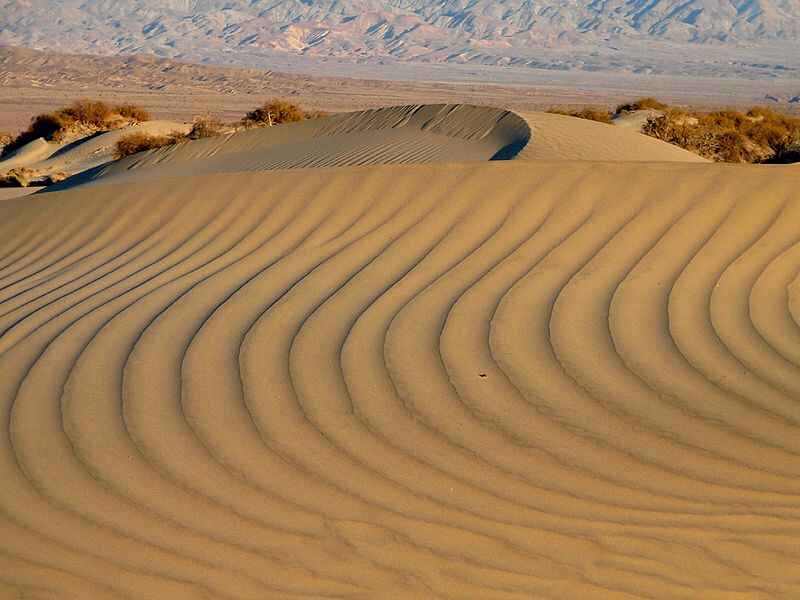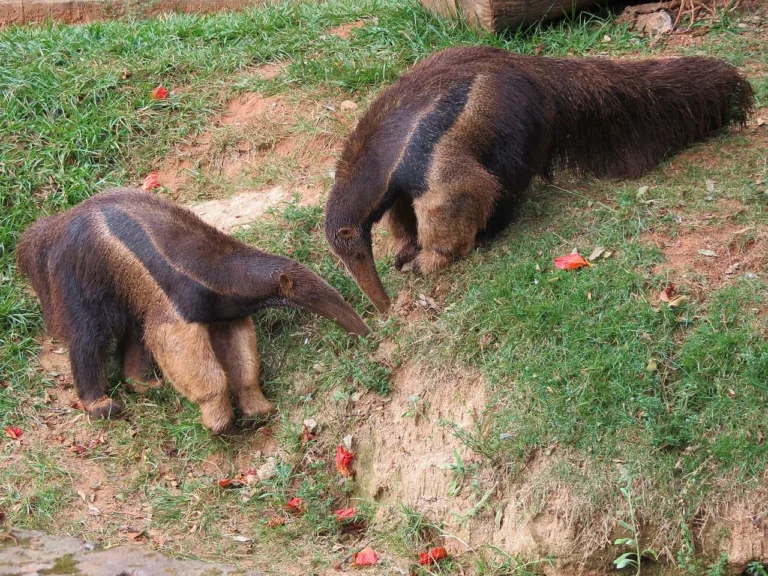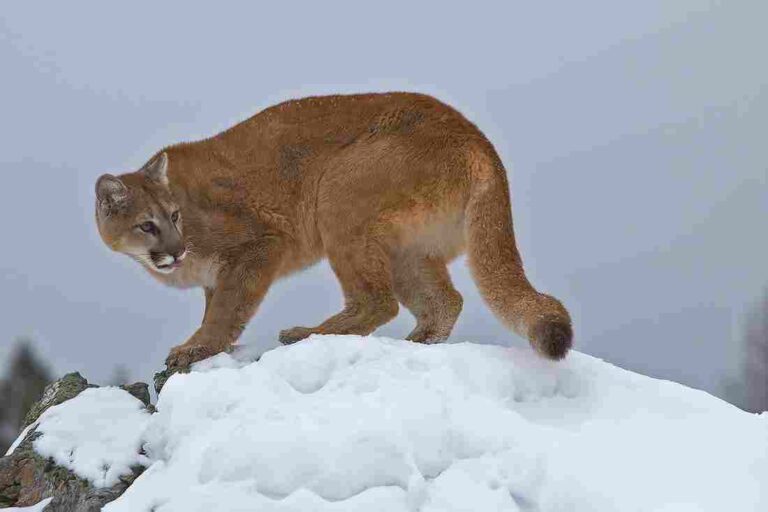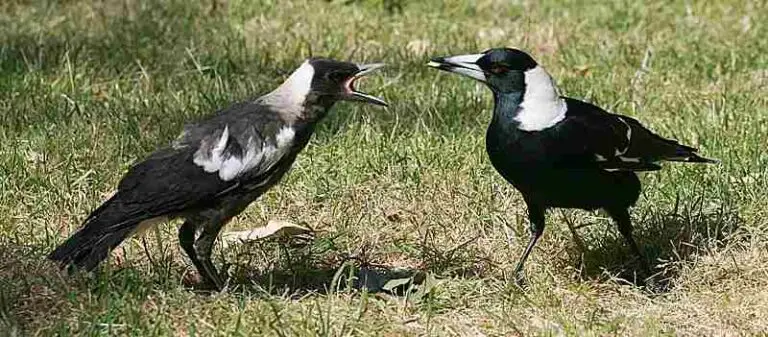5 Characteristics of Desert Biome Explained
Characteristics of desert biome are; extreme temperature conditions, low precipitation, relatively-low biodiversity, significant air current-dynamics, and aeolian geographic features.
This article discusses the characteristic of desert biome, as follows;
1). Extreme Temperature Conditions (as one of the Characteristics of Desert Biome)
One of the main characteristics of a desert is high temperature, which is caused by multiple factors that include geographic position relative to the equator and solar radiation, low humidity, as well as air current dynamics.
In addition to high daytime temperatures, deserts generally experience extremely low nighttime temperatures. The average desert temperature is 38°C in the day, and -3.9°C at night.
These values show that deserts in the world experience significant degrees of daily temperature fluctuation between high and low extreme levels.
Temperature is extremely high in a desert during the day because low atmospheric humidity and lack of vegetation allow large magnitudes of solar thermal energy to be absorbed and stored in dry soil and rocks, without the interference or cooling-effect of clouds, water bodies, or plants.
At night, the high temperature in a desert rapidly drops and becomes low because there is no insulating or heat-retaining effect, which is usually provided by air moisture. The continuous convective dynamic of dry winds allow heated soil and rocks to lose their moisture rapidly to the upper atmosphere, by radiative energy transfer.
Overall desert average temperature per annum ranges from 20-25°C, and the precise value differs for the various types of deserts. Deserts with hot and dry desert climate (BWh), experience generally higher temperature conditions than those with cold desert climate (BWk) and mild desert climate (BWn/BWh) respectively.
Extreme temperature goes a long way to influence other characteristics of desert ecosystems; including humidity and biodiversity.
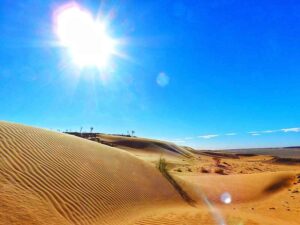
2). Low Precipitation
Low precipitation is one of the desert climatic characteristics.
Deserts are defined mainly by their low levels of precipitation, which are generally lower than 10 inches per annum [6].
Deserts have low precipitation because of the effect of geographic position, and/or air current dynamics.
Solar radiation in deserts closer to the equator such as the Sahara; heats up air masses and causes them to rise and move away toward the tropical regions (by convection) where they form clouds that facilitate precipitation. This dynamic ensures that air masses do not contain significant moisture, and mitigates convective air rising, clouding, condensation, and precipitation within the desert.
For mild, coastal and polar deserts, low precipitation is facilitated significantly by the interaction between air masses, whereby humid inland air masses from off the coast are intercepted by local, non-humid air masses.
In both cases, the outcome is a condition where air currents only reach the desert when they are stripped of their moisture content.
Because of the low levels of precipitation, deserts also have low relative atmospheric humidity. This is what exposes such areas to intense heating by the Sun, and rapid heat loss at sunset.
Of all existing ecosystems that are recognized on Earth, deserts are the driest [7]. A consequence of this is low species richness and biodiversity, as only few species of plants and animals are able to survive the arid conditions.
3). Relatively-Low Biodiversity (as one of the Characteristics of Desert Biome)
Low biodiversity is a typical characteristic of deserts, meaning that a small number of organisms and species can be found in a desert, especially in comparison to other ecosystems like grasslands and forests.
The main reason for low desert biodiversity is the harsh environmental conditions, which are driven mainly by extreme temperature and low precipitation [2]. These conditions ensure that only organisms with specialized adaptive features from multi-generational evolution, are able to survive in deserts.
Some characteristics of desert animals are; relatively-slow metabolism, camouflaging, keen-sensitivity, burrowing and nocturnal behavior; which enable them elude predators, avoid dehydration, and find food at any trophic level of the desert energy pyramid where they are found.
Characteristics of desert vegetation include; well-developed root system, thorny or hard exterior and restricted transpiration mechanism; which reduce water loss, enable plants to find soil moisture at depth, and repels potential herbivorous predators.
The low biodiversity of deserts can be observed in its sparse vegetation and relatively barren outlay. Some renewable energy development projects have in fact exploited the large expanse of barren land in the desert for solar and wind system installations [1].
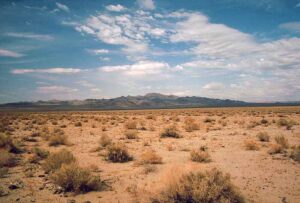
4). Significant Air Current Dynamics
Wind in the desert is generally intense, with air currents flowing at high velocity to and from the hinterland.
The main cause of intense wind in the desert is solar radiation, which leads to significant heating and loss of air density, as well as cooling and descent of air masses. These two alternate (heating and cooling) effects create highly-active convective cycles that constantly drive air masses across the desert landscape.
Another factor that contributes to the prevalence and effectiveness of wind in the desert is the relative sparsity of vegetation or manmade structures that can serve as barriers to wind flow.
Types of winds in the desert include khamsin, simoom, sirocco, and harmattan. These desert wind-types can be differentiated by their origin, direction of flow and geographic coverage.
The sirocco desert wind, for example; is a northward trending air current that is formed by oceanic-wave and solar effects, and blows from the Sahara region in Africa, toward the Mediterranean [3].
Wind-based processes in the desert include weathering, erosion, transport and deposition. These processes are what shape the desert landscape, and result in unique topographic and geomorphological features, some of which are discussed in section (5) below.
(Winds also affect the formation and quality of water in desert oases [5]).
5). Aeolian Geographic Features (as one of the Characteristics of Desert Biome)
Aeolian processes are particularly active in the desert due to the presence of active air currents, mobilized by the convective effects of solar heating and air-mass migration.
Geographic and geological features of the desert are largely formed by aeolian processes, which dislodge, transport and reshape earth materials like rocks and soil.
Aeolian landforms in deserts include ergs, loess, and sand-ripples; which originate from erosional and depositional activities of wind. Other features like ventifacts and yardangs can also be produced by wind erosion [4].
It must be noted that although aeolian processes are also prominent in cold deserts like the Antarctic, they are less-intense in such zones than in hot and dry deserts like the Sahara.
Intensive aeolian weathering produces large amounts of small particles like sand and dust, whose presence is among the characteristics of deserts.
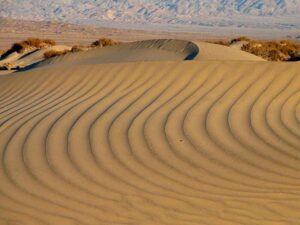
Conclusion
Characteristics of desert biome are;
1. Extreme Temperature Conditions
2. Low Precipitation
3. Relatively-Low Biodiversity
4. Significant Air Current Dynamics
5. Aeolian Geographic Features
References
1). Al-Dousari, A.; Al-Nassar, W. Kh. E.; Al-Hemoud, A. M.; Alsaleh, A.; Ramadan, A.; Al-Dousari, N.; Ahmed, M. (2019). "Solar and wind Energy: Challenges and solutions in desert regions." Proceedings of the ICE - Energy 176:184-194. Available at: https://doi.org/10.1016/j.energy.2019.03.180. (Accessed 11 April 2023).
2). Fei, C.; Dong, Y. Q.; An, S. Z. (2022). "Factors driving the biomass and species richness of desert plants in northern Xinjiang China." PLoS One. 2022 Jul 22;17(7):e0271575. Available at: https://doi.org/10.1371/journal.pone.0271575. (Accessed 11 April 2023).
3). Khedher, C. B.; El Melki, T.; Mouillot, F. (2020). "Saharan Hot and Dry Sirocco Winds Drive Extreme Fire Events in Mediterranean Tunisia (North Africa)." Atmosphere 11:590. Available at: https://doi.org/10.3390/atmos11060590. (Accessed 11 April 2023).
4). Knight, J. (2008). "The environmental significance of ventifacts: A critical review." Earth-Science Reviews 86(1):89-105. Available at: https://doi.org/10.1016/j.earscirev.2007.08.003. (Accessed 11 April 2023).
5). Mao, D.; Lei, J.; Zeng, F.; Rahmutulla, Z.; Wang, C.; Jie, Z. (2014). "Characteristics of wind erosion and deposition in oasis-desert ecotone in southern margin of Tarim Basin, China." Chinese Geographical Science 24(6):658-673. Available at: https://doi.org/10.1007/s11769-014-0725-y. (Accessed 11 April 2023).
6). Rosenberg, M. (2019). "Desert Definition and Characteristics." Available at: https://www.thoughtco.com/all-about-deserts-1435317. (Accessed 11 April 2023).
7). Stutsman, J. (2019). "Humidity in Deserts." Available at: https://sciencing.com/humidity-deserts-6577246.html. (Accessed 11 April 2023).
8). Zu, R.; Xue, X.; Qiang, M.; Yang, B.; Qu, J.; Zhang, K-c. (2008). "Characteristics of near-surface wind regimes in the Taklimakan Desert, China." Geomorphology 96(1):39-47. Available at: https://doi.org/10.1016/j.geomorph.2007.07.008. (Accessed 11 April 2023).
